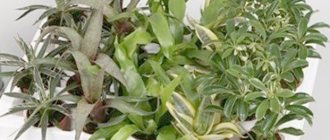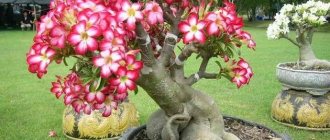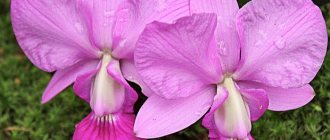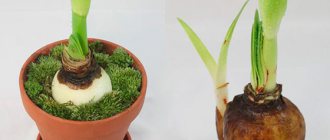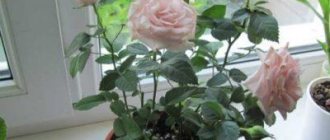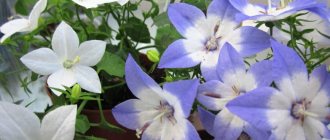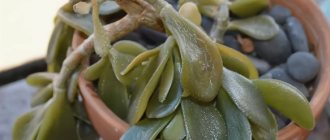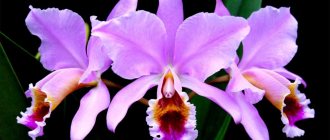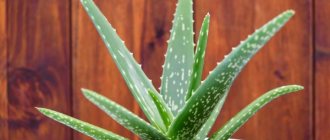People far from floristry know Crassula exclusively as money tree or crassula. Meanwhile, a colossal number of varieties and varieties of plants are grown at home. Flower growers place a tropical plant on the windowsill and perceive it as a talisman to attract finance. And the evergreen leaves, reminiscent of glossy coins, turn the fat plant into a real interior decoration. For the “green talisman” to work and please the eye, no special effort is required. The main thing is to create a suitable microclimate. And we'll tell you how to do it.
Briefly about care
- Watering. Moderate: twice a week in summer, once every 2 weeks in spring-autumn, once a month in winter.
- Illumination. More than 6 hours of indirect sunlight per day. In the shadows it stretches out and dies. In summer the windows are eastern, in winter - south.
- Air humidity. Doesn't matter. The succulent is not afraid of dry air.
- Temperature conditions. In summer: +20+26С, in winter +16С. At temperatures below +4C it may die.
- Bloom. From 5–10 years. The color, size and shape of flowers depends on the variety.
- Rest period. October-March.
- Transfer. Once every 2–3 years, in spring.
- Soil mixture. Nutritious, well-drained potting mix for cacti and succulents.
- Fertilizers. Light fertilizing with fertilizers for cacti and succulents (a quarter of the dose stated by the manufacturer). No more than once every 2 weeks during the growing season.
- Reproduction. Seeds, leaves, cuttings, dividing bushes.
- Diseases. Root rot, fungi (from waterlogging).
- Pests. Mealybug, spider mite, scale insects.
General information about the plant
Crassula is unpretentious and caring for it at home does not require any special effort. Regardless of the variety, the algorithm of actions and conditions of detention are unchanged.
In nature, the evergreen crassula (Latin crassula - thick) amazes with its diversity of species. The vast majority of plants belong to the succulent family Crassulaceae, numbering over 360 species.
Semi-tree, bush and herbaceous larches can be found in the driest parts of our planet. There are especially many Crassulas in South African savannas and woodlands.
The more complex the living conditions, the more decorative the appearance, the brighter the color and the more intricate the flowers.
In terms of external characteristics and structural features, the Crassula varieties differ greatly from each other. Only a few features unite all species and varieties of the Tolstyankov family:
- opposite arrangement of leaves (each pair of leaves is at an angle of 90 degrees relative to the previous one);
- absence of dissection;
- small flowers of different shades are collected in inflorescences with the same number of stamens and petals;
- the root system is shallow.
Carefully! Crassula is poisonous. The juice of the leaves of the plant contains arsenic.
Facts about the Oval or Ovoid Crassula (Crassula Ovata)
Money tree or Crassula ovata has curved and oval leaves, usually growing upward. In general, there are more than 600 species of Crassula, some are very rare and expensive. And some are affordable and very beautiful, for example, Hobbit, Gollum, Minor, Sunset and other flower varieties.
An unusual variety of Gollum. Photo used as illustration. Source: Yandex.Images
The tree is a wonderful addition to any interior, suitable for growing in bonsai style and creating a small home garden. But there is another side to the coin, and sometimes this Succulent can cause problems.
The fact is that this is a poisonous plant. For an adult, the poison is practically harmless, but has a strong effect on small children and pets. We advise you to keep the flower away from children and pets.
Crassula species
Not all Crassulas take root at home. If you are thinking about purchasing a plant, turn your attention to the compact and unpretentious representatives of the tree, ground cover or spicate groups. Plants of each group have similar characteristics of structure, flowering, shoots, leaves. However, there are also differences.
We present to your attention the types of Crassula suitable for home floriculture, names and photos for clarity.
Columnar
Deceptive
Crassula deceptive or Deceptor (C. Deceptor) - a silvery-white plant native to the deserts of Namibia and South Africa. The miniature succulent is distinguished by a tetrahedral columnar stem reaching a height of 7 cm. Externally, the deceptive Crassula resembles a neat column with a diameter of 2.5 cm. Fleshy gray-green leaves with a whitish coating are tightly pressed to one another. Small pinkish flowers exude a sweet aroma. The deceptive Crassula grows quickly and after a few years takes on an unkempt appearance. The situation can be improved by cutting the stem as short as possible. After crossing with Crassula, phylcata forms the green velvet hybrid “Moonglow”.
Crassula deceptor
Buddha Temple
Crassula Buddha's temple (C. Buddas temple) is a hybrid obtained by crossing Crassula perfoliate and pyramidal. Buddha Temple grows up to 15 cm in height and has a tendency to branch. Buddha's flowers are small, pink-red. Has much in common with the green pagoda hybrid.
Crassula Buddha Temple
Plegmatodes
Crassula plegmatodes (C. plegmatodes) - a low columnar shrub that forms grayish-green columns. The leaves are round, thick, intricately folded: pairs of leaflets seem to be folded crosswise.
Crassula plegmatodes
Spring time
Crassula springtime (C. Spring time) - a decorative compact succulent with a tendency to lodging. The leaves are thick, rich green. The diameter of the shoots is from 3 to 4 cm. It blooms with pale lilac flowers.
Crassula spring time
Pomegranate Lotus
Crassula garnet lotus (C. Garnet lotus) has many thick garnet-purple leaves that appear to be covered with frost. Each leaf is tapered towards the edge and stands vertically in a rosette (lotus-shaped). Height and diameter 15 cm. Blooms in large clusters of red flowers.
Crassula garnet lotus
Garland-shaped
Crassula Corymbulosa (C. corymbulosa) is a small succulent with deep red, fused leaves in pairs. The latter sit tightly on low lodging stems. During the flowering period, the shoots grow significantly.
Description
Crassula ovate is a semi-herbaceous plant that came to our windowsills from South Africa. Included in the TOP 5 best flowers for home growing.
Crassula ovate is a large, branching, compact and evergreen succulent plant. The shape of the bush is round. The plant blooms only in winter and spring.
Other characteristics of the plant:
- Stem . Thick, up to 20 cm in circumference. At the base it is knotty, from soft brown to gray.
- Branches. Small, proportionate, fleshy, their color is green with a slight gray tint, naked. If you look closely, you can see scars from fallen leaves. In mature plants, the bark peels off, forming brown horizontal ribbons.
- Leaves. Length 3-9 cm, width maximum 4 cm, shape – ovoid. The leaves are glossy, fleshy, flat, the tip is slightly pointed. Their main color is green, but depending on the variety, the shade can vary from gray to pale red. Near the edge there are nectar glands, their position is in rows, but randomly, found on both the upper and lower surfaces of the leaf.
- Peduncle. The inflorescence is corymbose-paniculate, apical, round in shape, can be dense or loose, but always with a large number of small flowers.
- Flowers. They have a star-shaped shape, their color is soft pink, there are 5 petals, and the aroma is unobtrusive. The sepals are broadly triangular, fleshy and have sharp tips. The corolla is white or slightly pinkish. The petals are oblong, sharp, spreading. Stamen filaments are about 5 mm with purple anthers. Pistil 2-3 mm long, thread-like.
- Fruits and seeds. The fruits of the Crassula ovoid are small capsules measuring 3-3.25 mm, each of which contains a large number of small seeds.
Ailments and their possible causes
- Crassula sheds its leaves - the succulent is watered with too cold water (there is no need to water a heat-loving flower with tap water; use water at room temperature that has been standing for at least a day).
- The leaves began to wither and turn pale - this usually happens due to excessive watering during the dormant period or excessive feeding with mineral fertilizers during the growing season (you should reduce watering and avoid mineral fertilizers for at least 1 month).
- The leaves have darkened and wrinkled - the plant is suffering from insufficient watering.
- Brown spots have appeared on the surface of the leaf blade - a lack of moisture (it is recommended to spray the fat plant with settled water).
- Near the soil itself, the trunk of the fat plant has turned black - root rot has developed and the plant can only be saved by pruning and re-rooting the surviving shoots.
- The stem is elongated - during the dormant period there is too little light or too frequent watering (you need to adjust the frequency of watering, dry the earthen ball and provide sufficient lighting).
- In summer, the leaves lost their elasticity and fleshiness - too little watering (as a solution, in addition to watering, you can spray the above-ground part).
- The foliage began to dry out and crumble - most likely, the succulent is in cold drafts (move the succulent to a protected place).
- Black dots on the leaves are a sign that the fat plant has received a sunburn.
- The leaves are covered with a white coating - there are spider mites, mealybugs, or the succulent is affected by powdery mildew.
Attention! If your Crassula is in poor condition, after eliminating the causes of the disease, support the plant with Elin, Zircon, and Kornevin. Dilute in water according to the instructions and pour the resulting solution over the “patient”.
If the fat woman suddenly began to wither and turn black right before our eyes, most likely she was in too cold a room and froze. Don't rush to panic. It is better to cut off all affected shoots and sprinkle the cut areas with activated carbon. If there is a possibility that the roots will freeze, remove the plant from the soil, inspect it, trim it if necessary, and replant it in a new soil mixture. It would be nice to spray it with Elin.
Reproduction methods
Crassula propagates in three ways: cuttings, seeds and leaves. Let's consider each method separately.
Most gardeners use growing new specimens from cuttings. It's simple if you follow a clear algorithm:
- Place the cutting in water with the addition of charcoal and wait for the roots to appear.
- Plant the new plant in a pot (diameter 6 cm).
- Compose the soil from equal parts of river sand, turf and leaf soil.
- Place the pot with the new Crassula in a well-lit place with an air temperature of up to 17 C.
- Water once a day.
Few people like to “play” with seeds, so this method of propagation is not very popular. If you have a lot of free time and a strong desire to start with the most difficult ones, try multiplying using the following tips:
- Place the seeds on the surface of the soil mixture (the soil is prepared as for cuttings).
- Sprinkle water from a spray bottle on top.
- Cover lightly with soil.
- Cover with clear plastic wrap.
- Remove the film once a day to allow the soil to breathe and not mold.
- When the first shoots appear, water them once a day.
Propagation by leaves is not used for all varieties of Crassula. Leaves that have roots in places adjacent to the trunk are suitable here. Select a healthy, strong leaf and leave for 48 hours in a warm, dry room. As soon as the leaf wilts, start rooting:
- Pour the growth stimulator solution into a small glass.
- Deepen the leaf 1 cm into it.
- Place the container on a warm, well-lit windowsill.
You can reproduce it differently:
- Place the leaf on the edge of the pot and dig down 2 cm.
- Add crushed red brick to the soil mixture (this will prevent water from stagnating and the leaf rotting). Instead of soil, you can use crushed sphagnum.
- Moisten the soil.
Methods 1 and 3 provide the highest efficiency. Within a month, the cuttings and leaves begin to produce roots.
Varieties of Crassula ovata
Breeders have developed many interesting varieties of Crassula ovata. They may differ in the shape and size of the foliage, as well as its color and height of the bush. Among the most popular:
Hobbit
This hybrid was obtained by crossing the oval species with the lactea crassula. The plant is notable for its foliage. It is strongly turned outward, and its edges grow together at the point of contact, forming an unusual tube, expanded upward. Along the edge or along the entire inner surface, the leaf is colored reddish-wine. Its saturation may vary depending on the degree of illumination. The height of such bushes is about 60 cm. Their stems are slightly thicker than those of the species plant.
Minor
This variety has a slow growth rate and is smaller in size than the species Crassula. Its leaves reach only 1.5 cm in length and a centimeter wide. If you keep such a bush in a well-lit place, a clear reddish-pink border will form along the edges of the green leaves. In fat plants growing in the shade, the foliage remains monochromatic.
Sunset
In bright light, the leaves of this variety become tricolor: they display golden-yellow areas and a reddish-cherry edge. The shape of the leaves does not differ from the species. The height of the bush does not exceed 1 m.
Gollum
A hybrid Crassula, also with foliage rolled into a tube. The height of the bush when grown in a pot reaches up to 80 cm. Unlike “The Hobbit”, the leaves of this variety are completely connected, due to which the “tube” expands only slightly at the top. Another trumpet cultivar, 'Coral', has curled foliage that tapers towards the apex. The color of Gollum's leaves can be either monochromatic or variegated.
There are also such popular varieties of Crassula ovata:
- Alba is a variegated variety with yellowish stripes on the surface of the foliage;
- Coral - the foliage of the variety is rolled into tubes;
- Oblikva is a natural form, the leaves of which have curved edges and a pointed tip, and its trunk is thicker;
- Sombrero - with a red border of leaves;
- Tricolor - foliage has a reddish underside;
- Horn Tree - with reddish-green leaves.
Cacti and Succulents Indoor Plants
When to replant and how to form a crown
The succulent needs to be replanted as it grows. Some plants move from pot to pot several times a year.
A poorly developed root system cannot always support a powerful above-ground part. Therefore, the choice of pot must be approached with special care. Ideally, this is a voluminous, heavy, not very deep ceramic pot.
The process of crown formation is no less important. To achieve the correct shape, you need to wait until 4 new leaves appear on the bush and a new point is formed. Gently pinch it off with tweezers. Leave 3-4 pairs of leaves on each branch. The crown of a grown bush should be plucked off.
Crassula is one of the most unpretentious houseplants. Flower growers who grow succulents on their windowsill leave the most flattering reviews about it. According to them, the unpretentious resident of the flower garden grows on its own, practically does not get sick and is not affected by insects. So don’t be afraid of difficulties and feel free to decorate your home with an evergreen talisman.
